There comes a time in every mans life when he has to face facts. If things aren't working out then something has to change.
Highway 1 has become too much for me.
But each time I look at a map for an alternative the roads appear to end in the middle of nowhere. It was on the advice of Grace and David from Australia that I was persuaded to take a chance. They assured me that although the maps ran out of road, on the ground I would still find a track or at least a ridge between paddy fields to ride along. And so I set off the next morning aiming to use nothing but back roads. The only concern this day was the two roads with a 2 kilometre gap between them. On the map the two roads ran towards eachother. I couldn’t see how they could both end when a continuation from one to the other would produce a through route all along the coast. So it was that I set off and rode along the coast expecting to continue all day. In fact the point where the road ended on the map was exactly where the road actually ended.
It was then that I looked longingly towards the beach and saw to my astonishment a line of scooters all riding along the beach. They were using the firm wet sand and seemed to be having no trouble as they carried their fishing equipment with them. So I decided that if they could do it then so could I. Pushing the bike over the first section of soft sand and down to the water I remounted and made my way up the beach, with a grin as wide as a Cheshire cat. What a way to travel. If it wasn’t for the fact that I would need food and water fairly soon I would like to have stayed there all day, sitting and enjoying the view and then riding along the beach. It was not to be though and as soon as I saw the road again I began looking for suitable places to cross the dunes and find some food. More back roads and more peace and quiet. Although the riding is much more enjoyable this way it is also slower as the roads tend to meander their way through villages. This means that I either have to cut short my distances or extend my time in the saddle. As there are only so many towns with accommodation it means that I need to push on for longer each day, and even though it means that my backside takes an extra hammering the joy of riding these roads more than makes up for it.
Time is beginning to nag at me as I head north though.
I am more conscious now of the distance left to ride before I reach Beijing as the clock ticks down towards the end of the journey. I still have almost half way to go to reach my final destination and have been calculating the dates to make sure I don’t run out of visa time in China. The major problem of course is that I don’t yet have a visa for China. The Chinese embassy at home say that you have to obtain your Chinese visa from your home country, however that would only be valid for three months and would therefore have run out by the time I reached the border. Most cyclists have been getting visas in Chinag Mai, Thailand or Vientiane, Laos but I am heading to Hanoi, where I hope the embassy is as easy going. Talking to Grace and David I found out that they got theirs in HCMC very easily, so fingers crossed for Hanoi. The Chinese visa is for just one month but can be extended up to twice while in the country for a month at a time. This would give me three months in total as long as the extensions run consecutively instead of overlapping. If I arrive at an extension office and they stamp the date to run from when I present myself I may lose days. If this happens both times then I cold quite easily lose a week which could leave me with an expired visa when I get to the airport to board the plane home. No only could that prove costly at the time, but I may find myself barred from the country in the future. Not something that I would want to happen.
With time on my mind I am making my way north and visiting a few more places of interest along the way. One of the tourist attractions is the historical city of Hue, the ancient capital situated in central Vietnam. Hue holds one of the most remarkable cities within a city. The citadel was the Emperors palace, a massive walled enclosure that measures 2.5km along each side of a square with a moat approximately 30-40 metres wide completely surrounding the walls. Within this citadel was another city within a city within a city. The Purple, or forbidden, city was the Emperors personal residence where He and his family lived with a select few servants. Despite suffering extensively from war damage during both the French and American wars there are still a substantial amount of residential, religious and administrative buildings intact, as well as pagodas, assembly halls, a theatre and gardens. There are extensive renovations ongoing although I am not sure what is going to happen about the buildings that were completely destroyed. However, it provided an enjoyable three hours walking around inside the walls which completely shut out the traffic noise from outside which is no mean feat in itself.
The modern city of Hue didn’t appear to have much in the way of charm to me so when I had finished walking around the citadel I decided to ride on without staying. Back to the coast road. What a breath of fresh air this road is. Riding up through Da Nang and along China beach I was amazed at how empty the beaches are. There are miles and miles of beautiful beaches with parasols and life guards waiting for something to do except watch fishermen hauling their catches out of the sea. It is so easy to slow down to a complete stop here. Sitting on the side of the road and just taking in the scenery could take up days at a time. Continuing up the coast it’s just a shame that there are no places to stay between the larger cities. There are no guest houses along the coast in the fishing villages which means that I have to head back to the main highway each day to find somewhere to sleep. Which is quite strange as this is where all of the noise comes from. A night on the beach would be ideal but there are also no places to eat and drink there.
Continuing north I reached Dong hoi and the best baguettes I have so far tried in Vietnam. Most of SE Asia is devoid of bread but here in Vietnam they retain the French love of the baguette. There are many street vendors filling baguettes with anything from fried eggs to soft cheese, pate and other meats as well as some spicy sauces. You can never be too sure what you are going to get at each place unless you can order for yourself in Vietnamese. This, of course means that I get what I am given, but so far I have yet to have a baguette that I didn’t like. The bakery I found on the side of the road entering Dong Hoi was the best yet and they even sold yoghurt and ice cream too. Sounds like a three course meal to me. I made a note on the map of where the bakery was and decided to make it my breakfast stop the next morning.
One of the tourist destinations that appears to draw vastly more Vietnamese than Foreign tourists is the cave systems to the north west of Dong Hoi. This would require leaving the coast road and heading inland on the Ho Chi Minh highway. I had been planning to ride this road for a while so I set off to see if the road as really as quiet and scenic as I had heard, as well as finding out whether the caves at Phong Nha really were as spectacular as the tour guides say. Needless to say I shall keep you informed in due course.
Another town, another hotel, another camera.
One of the problems with being constantly on the move is making sure that you don't leave anything behind. A routine develops fairly quickly whereby everything is checked and double checked before leaving your temporary home each morning. Keeping account of where everything is becomes a lot easier once this routine has become internalised. The old saying "a place for everything and everything in its place" holds especially true when you don't have much space to keep everything in. It becomes apparent very quickly if something is not in its place once you start packing. Unfortunately some things get left behind in places other than your hotel between unpacking and repacking. So it was with my camera. Leaving it in the cable car pod was a costly mistake, but one which I quickly resolved once I reached Na Trang thanks to my old friend Mr Visa.
Vietnam, once divided into North and South by an agreement at the Potsdam conference at the end of the second world war between Russia, the US and the UK, has long since been rejoined politically thanks to 'Uncle Ho'. A new division is evident here though between places that attract tourists and those that remain local. The tourists require a lure to attract them and one way to do this is to play on the historical aspect whether it be ancient monuments, the American war with its roadside cemeteries, networks of tunnels and museums or the years of French rule with its architecture. Hoi An is definitely a place where French architecture is prevalent. During my time in Da Lat I spent half a day just riding around the city looking at many of the villas and other buildings that were left behind when the French left. Sometimes they were not so easy to find as communist planning didn't take into account the future prospect of tourism. Many villas seen in photographs from the 50s' lining the hillside overlooking the lake are now hidden behind gruesome buildings made of slabs of featureless functional concrete. In comparison Hoi An seems to have escaped the communist builders and retains a lot of its French influence.
Na Trang on the other hand has its beach but that seems about all. It's a long beach and very good too but there doesn't appear to be many people using it except in the evenings when families and couples walk upon it or in the early morning when groups of older ladies practice Tai Chi. There are some very wide boulevards and some very narrow backstreets. For me it was a place to go diving. After checking out a few dive centres I booked onto a boat for the next day with a promise that 'everything will be okay'. I had heard this too many times in the previous hour to be convinced by it though. When asked to see the equipment that I would use the phrase "Don't worry, it's okay" became the mantra of the dive shop staff. It was only when I met an American Assistant Instructor at one of the dive shops that I had any questions answered. The option of Nitrox instead of air was also good as I had planned to do three dives. Nitrox is a blend with a (usually) higher percentage of oxygen and therefore less nitrogen, allowing longer bottom times but also less tiredness post dive. The latter is especially beneficial when doing multiple dives with short surface intervals which our plan entailed. When reaching the boat in the morning I was told that only two nitrox cyclinders were on board so the first dive would be on air. Not a huge problem and thankfully the only surprise of the day. The diving was easy, colourful and well guided with snacks and lunch included (while back on the boat, just in case you were wondering) and the boat large enough to sit in the water without being affected by the swell, thankfully saving me from feeling seasick during the surface intervals.
Heading north up the coast the next day I made good progress with a tail wind along the mostly flat highway 1. Long stretches of road lined with small industries, bars, restaurants and rice fields proved to be particularly uninspiring, although there were occasional highlights to keep my attention. I just wish I was able to get my camera out quicker when passed by some of the most bizarrely laden scooters. Many of the scooter riders slow down to take a look before speeding up again only gaining the courage to call out "hello" once they are almost out of earshot. Many times I say hello to them first which almost always brings a smile to their faces, especially the kids coming out of school. When passing groups of these school kids heading the other way I see many of them pointing at me and telling their mates, making those heading my way but in front of me turn their heads to see what they are pointing at. Despite the fact that many of them nearly crash by doing this it's also quite funny seeing the expressions on their faces. The shock of seeing a westerner is almost too much for many. Last night I walked into a supermarket and people were staring and actually following me for short distances in order to get a good look. At one point I decided to follow some of them to see what they did which luckily always ended in laughter from everyone involved as well as those watching from the sidelines.
In one of the many nameless towns which I passed through I was beckoned over to join a group of party goers under a canopy while looking for somewhere to eat. At first declining the offer I was besieged by a number of the men who had been drinking and were insistent upon me joining them for some food and drink. Not wanting to appear rude, and being hungry and thirsty, it didn't take too much for them to persuade me. They were all family members that had gathered for a religious celebration of some sorts and took it in turns to make toasts. Although the glasses were small and the ice cube was large they insisted that every toast ended with an empty glass. Not being a drinker I tried to sip instead of gulp but after a few goes at this I was being urged to down it all. Needless to say I had to leave as soon as the party began to show signs of coming to an end to save myself from falling off the bike when I resumed riding. Later in the day I met a Vietnamese who had been working in Australia for five years and we struck up a conversation while I bought some drinks. He was so pleased to meet an English speaker that he also insisted on buying my drinks and then a packet of biscuits too.
Just before reaching Hoi An I met my first touring cyclists since being in Vietnam. The first Chinese cyclists I have met. The first didn't speak English but Mike (he assured me that was his name) spoke very good English and we spent ten minutes or so discussing routes etc before going our separate ways again. Soon after entering Hoi An I met another three cyclists. Despite having no panniers etc it is obvious to me who the touring cyclists are, especially in a region like South East Asia. David and his partner are from Australia and are on their way to the UK to start a job there early next year. They are joined for a few weeks only by his sister, but once she returns home they are riding overland to Bristol. Small world.
It gets even smaller. At the hotel I booked in to I met a German woman who spent time in Bangkok doing a massage course alongside Stephan, the German cyclist that I shared a hotel with in Stun Treng, Cambodia, about six weeks ago. Coincidences abound.
One thing that I have been hearing repeatedly from other cyclists about Vietnam is the amount of noise on the roads. There are over 90 million people here and the roads are quite congested. Unfortunately the easiest way to get yourself noticed is by the use of the horn. Most of the trucks, coaches and mini buses have aftermarket air horns fitted with the loudest, sharpest and most piercing tones. And boy do they know how to use them. They are used constantly by vehicles through the towns as well as on the open road. You don't have more than 2 minutes without hearing them, often from extremely close quarters and they seem to be used solely for bullying other road users. Many times in the last two days riding I have seen coaches overtaking lorries with horns blaring as they push oncoming scooter riders onto the verge or force them to stop. And for some reason, just like the traffic in HCMC, having someone push you off the road here is accepted quite calmly. . . . . except by me. The frequency with which I am swearing has increased dramatically as drivers continually sound their horn in short blasts as they approach from behind. Even in the market place where people ride scooters through the crowds and between the stalls they use the horn to push other people aside. Just this morning as I was in the process of buying some fruit a woman sitting on a scooter, shoulder to shoulder with me, sounded her horn five times just to let me know she wanted to pass. To say that I am fed up with it would be an understatement. I am wondering how long I can last and whether I head west, back into Laos and head to China from there.
Still, in between having my eardrums assaulted there are some very nice places to visit and Da Lat is one of them. While on the road to Da Lat I met a Vietnamese/Australian who was running from HCMC to Da Lat with a friend and two support cyclists. As we made our way to his girlfriend while she waited for him he told me about his plans to organise runs for Vietnamese people. It seems that there is a potential market for these events here. When we met Tram I couldn't believe she was riding her bike all the way from HCMC to DL. She was riding a single speed bmx with small wheels and the saddle almost as low as it could go. The pedals were creaking enough to make me wonder if she would make it to the next corner, let alone DL. We met up that evening at the next town and spent a couple of hours together over dinner discussing how running events were organised, advertised and controlled in the UK.
My first destination on reaching DL was the Crazy House, an architectural odyssey partly inspired by the work of Gaudi and created by Dang Viet Nga. Overcoming opposition from the Peoples committee of the city of Da Lat as well as the government in Hanoi, Dang has now been allowed to continue development of the house unrestricted. The house is also a hotel with each room having a theme around an animal or insect. It's quite an amusing themepark type of house and an amazing architectural odyssey.
Next stop was the flower garden. Da Lat is set around an artificial lake which is surrounded by grassy banks and parkland. The flower garden is also set next to the lake and includes formal flower beds, a rose garden, statue garden and bonsai section. Topiary hedges have been created including tea pots and a serpentine monster.
The statue garden, including some rather risque (for Vietnam) nudes.
Some more old French buildings.
The picture below on the right is the train station, although it is not used very much any more. There is a train that runs to another local town supposedly up to eight times a day but in fact only departs if there are at least two people aboard, otherwise you may have a long wait. There are supposed to be plans to reconnect Da Lat to the mainline but nobody knows when. One more side trip I went on while at Da Lat was a cable car ride to a local pagoda which is set in beautiful grounds and surrounded by trees. Unfortunately I left my camera in the cable car pod on the way back. Luckily I had backed up all of the photos to my notebook so at least the other pictures of Da Lat can be seen here. I went back to the cable car station to see if it had been handed in. As I arrived the pods were being taken off the cable and parked up for the night which allowed me the opportunity to check them all, but the camera had gone. That will teach me to keep my wits about me a bit more.
Da Lat is a very pleasant city that is surrounded by valleys that have been taken over by market gardeners. There are plastic greenhouses everywhere but luckily not in sight of the city itself. The ride from Da Lat was an undulating affair with an emphasis on gaining height, but at last the crest was reached and with it a dramatic descent back down to the coast and my next stop, Na Trang.
Getting up early to beat the rush is not just for the tourists. A pre-dawn start is ideal for cyclists here as it allows you a short time to ride before the heat becomes too much. And I do mean a short time. Setting off just before 6 am I began a 110km ride to Ho Chi Minh City (HCMC), formerly Saigon. Old newsreel images of the helicopter evacuating Americans atop their embassy before it was stormed, as well as pictures from the war have ingrained themselves in the public consciousness over the years together with more modern stories such as the Robin Williams film Good morning Vietnam. It was with these images in my mind that I rode north on Asia Highway 1 to the capital of the south. Of course, decades have passed since the war has ended and the city is growing and changing at an amazing rate. One change of course is the cities name. In an attempt to do away with images of the past the new government changed the cities name from Saigon to Ho Chi Minh, a mark of respect to the countrys leader and defeater of the 'American imperialists'.
As I rode into the city the one thing that caught my eye was the number of scooters flying around. In each of the countries I have visited in South East Asia scooters are rife, and usually make up a large percentage of the total traffic, but here in HCMC they appear to outnumber all other traffic by a sizeable mark. I have heard that anyone aged 16 and up is allowed to ride a scooter although there are obviously many riders younger. There is no registration required, no test to be undertaken, no insurance or road worthiness test requirements as far as I am aware. Scooters often have their own lanes but are not always confined to them. Most of the time the traffic is a free for all. Traffic here drives on the right, but lots of scooters can be seen riding alongside the kerb against the flow of traffic if they want to get somewhere without having to follow the traffic up the road and turn round. In fact the pavements are used as scooter lanes too should the need arise or if you want to jump to the front of the queue at the traffic lights. And when the pavements are not being ridden on they are used for parking scooters in rows that can be as many as four deep and hundreds long.
What makes the traffic here so interesting though is the way that they ride. Everyone concentrates on not hitting anyone in front of them. If they are behind you then it is up to them to concentrate on not hitting you. This can lead to a few hairy moments when someone begins to overtake you and then turns across you onto another road, after all once they are in front (and that may mean by just half a wheel) then you have the responsibility to not hit them. Traffic light controlled junctions are even more chaotic. Many junctions have countdown timers showing the number of seconds left until the lights change to red or green. This means that riders can preempt the change and go early. If there were a gap between the change to green and the crossing traffics lights turning red then this would be okay but of course this doesn't happen and many of the crossing riders are also continuing through the lights after they have turned red. Couple this with riders setting off just before green and wanting to turn left across the traffic coming the other way and of course with riders from the opposite direction turning left too and you have an instant jam where everyone inches forward and around eachother until the dominant flow is recognised. Once this occurs then it is up to the other riders to inch their way slowly along their chosen path trying to reach open ground where they can continue on their way.
At one roundabout I traversed a number of times there are seven roads, all unregulated by lights, white lines or traffic police feeding onto it. The idea seems to be to get onto the roundabout and keep moving while not acknowledging the other traffic. That's not to say that you are not looking at the other traffic, you simply keep it in your peripheral vision to monitor it but if you look around and make eye contact you have lost. If you look at the other traffic then you have given them the right to keep going forcing you to stop until there is another gap. This gap an be created by inching forward continually until there is not enough space for traffic to cut across you anymore at which point all the other scooter riders trying to do the same create a new dominant flow. It's completely crazy and chaotic but bizzarely effective. The strangest thing about it though is the fact that nobody seems to get annoyed about being cut-up or forced to stop while someone else bullies their way through a crowd. I have not even seen a scooter rider giving another person so much as a stern look, let alone swearing. Considering that they are just a foot or two from eachother it would be so easy to do but It would seem that road rage is not a problem here.
For those wanting to cross the flow of traffic whether on wheels or on foot the best way to do it is to walk or ride slowly so that everyone has time to see you and take avoiding action. Slow and steady is the key. Erratic unpredictable moves create chaos and probably accidents whereas a steady stroll across the road is surprisingly safe.
Turning your back on the traffic the city itself has a good feel to it. There are a number of French colonial buildings that make up a part of the administrative section of the city as well as an opera house, hotels and other buildings. I haven't noticed any war torn buildings but then again I don't think the city itself was 'in the wars' much as far as I can remember. A couple of French and American fighter planes captured during the wars take pride of place on the grounds outside the war museum but apart from tourist souvenir posters and postcards the pictures of war are noticeable by their absence. Maybe this is another way of the new government eradicating the memories of the past and moving on. The younger generations are certainly focusing on the future instead of the past, and American culture is evident everywhere especially in clothes. Traditional costume is rarely seen in the city which has a good reputation for tailoring, and made to measure suits can be completed and delivered to your hotel within 24 hours.
For womens clothing the demise of the traditional costume called Ao Dai (pronounced something like Oh Yay) is a fashion tragedy. The Ao Dai is an elegant, feminine and beautiful garment that accentuates a womans figure without being revealing. A pair of long trousers is covered with a long tunic that has splits from the waist to the floor. Usually made of silk and often embroidered down the front it looks stylish and elegant. Unfortuately this has been replaced not just by jeans and t-shirts among the younger generations but also by shapeless and unflattering pyjamas worn by many women of all ages and for all occasions whether it be shopping, tending stalls at the market, visiting temples, doing housework, taking the kids to school or just sitting around watching the world go by. They really have become the go anywhere do anything trouser suit of the women here. In central HCMC the number of women wearing pyjamas is not as great as in the delta area but the numbers are certainly significant.
My time in the city has been spent finding a few items that have been lost or worn out and relaxing with a couple of friends that I have made. Chris, an actress and teacher from Australia (yes, she HAS been in neighbours) and Matt, a teacher from England at the international school who very kindly put me up in his flat for my visit. When Matt told me his flat was on the 5th floor I was a bit worried about carrying the bike up and down the stairs each time I wanted to use it, but when he told me that there was a lift and that he also had two bikes in the flat already I had a feeling things were going to be alright. In fact when Matt pulled up on his motorbike at the bar where Chris and I were having a drink it felt so relaxed and easy that Chris thought we were old friends from home instead of meeting for the first time. Having somewhere like this to stay while in a city is a huge bonus as it gives you a place to base yourself and also to relax. Hotels rooms are okay but in the city they tend to be clustered together and all you ever see is backpackers and tourists. Matt lives in a locals area and this is obvious by the food stalls and markets surrounding his flat. Street life here is amazing. Everyone is outside relaxing, eating, drinking or just chatting with friends. You can feel a real sense of community.
Five nights in a city is enough for me so I planned my route out of town and headed north east to Da Lat. Matt was up and on the road early too as he regularly meets up with a group of riders to get some miles in before the heat hits. His route was different to mine so we said goodbye at a major junction and with his directions in my mind I continued on my way. There were quite a few walkers, joggers and runners out in the pre-dawn light as well as a couple of groups or road riders who zipped past me. So much for beating the traffic. It's about 270kms to Da Lat so I'd better get going.
Entering Vietnam I began the usual round of new-country chores that need to be completed. A new sim card for my phone, currency exchange and familiarisation, new words to learn for the most basic verbal interaction and of course deciding on a route. I had already begun the last one while resting in Kep but no real decisions had been made except the obvious one such as visiting Ho Chi Minh City. This was a few days ride away though so a few intermediate stops were needed. Can Tho is the largest city in the delta and boasted the largest floating market which had been recommended to me by a young French couple so I decided to head there first.
Floating markets are one of the multi-sensory experiences that most people visiting South East Asia look forward to. The image of the floating market has been brought into our homes for years. Images of little old ladies in conical hats with big smiles drifting along in small boats selling fruit, vegetables, spices etc in colourful heaps is a beguiling image and one that is played upon to make Can Tho the ‘go to‘ place for a unique waterborne experience. Getting up early to beat the tourist crowds is the recommendation from the tour guides, so there we all were shuffling bleary eyed in the pre-dawn light towards a slippery plank of wood leading down to the landing stage. An armada of tourist filled boats, all determined to beat the rush.
The sun rose as we were cruising upriver, our driver more interested in making animals and bracelets out of reeds. They were in fact very good but they hampered our progress upriver due to the meandering route we took as she concentrated more on twisting and turning the reeds instead of preventing the boat from doing likewise. In order to get to the market you will have had to motor for about 30-40 minutes upriver. At this time of the morning the river is a cool place to be, not just for the breeze created by the boats progress up river but also for the diversity of boats and people starting or going about their daily lives. The Mekong truly is the lifeline of this area.
So there we were rocking gently in our boat, three tired tourists and one boat driver. We looked around the market at the number of boats doing business. There weren’t many. The reality is that this market is mostly for wholesale traders rather than housewives doing their daily food shopping. Instead of the little old ladies bringing their goods to market we saw large commercial river barges loaded with perhaps hundreds of tonnes of produce. Barges display their wares by hanging an example from a pole. Pineapples, water melons, tomatoes, cabbages and onions were plentiful. But these barges dwarf the other boats that move among them. Most of the small boats on the river are the ones carrying tourists or an occasional noodle soup vendor providing overpriced breakfast to the tourists who had to be up too early to grab breakfast ashore. It was at this point that you are able to see just how many tourists are willing to get up early in order to beat the tourist crowd.
As all of the tourists are getting up early to beat the crowds you are participating in a self-defeating excercise. Instead of little old ladies in little old boats the only people I saw that were taking an interest in what was happening were tourists with cameras. The number of tourist boats easily equaled the number of trading boats and possibly outnumbered them. This of course is exactly what we were trying to avoid. Perhaps the buyers and sellers have come to realise this and have done all of their deals pre-dawn or are instead waiting until all of the tourists have passed through before coming out onto the water. We were then taken on an extra portion of the tour, 'just for us'. A visit to a noodle factory, where we saw many of the tourists that were at the market at the same time as us. This was in fact the most interesting aspect of the morning on the river. However the boat driver became very friendly and talkative when at the noodle factory and kept repeating how hot it was and how thirsty we must be. What a surprise that the next stop was along the bank to a restaurant. The ploy was so obvious that we told her we were not interested in drinking coffee and that we would rather be on the river. She kept asking us why we were not drinking but soon gave up when she realised we had brought our own water and were not lying down suffering from dehydration.
Once we left the noodle factory the boat driver told us that we could take a backwater route on the return. This was a lot more interesting as we could see everything that was going on around us on both banks and in many places into the huts and houses that were lining the river. People were going about their business as normal. Small rickety bridges crossed over our heads as we made our way upstream and children called out and waved as we passed. This was much more interesting. Until the banks became barren and the people were left behind. It was now a meandering journey through dirty smelly backwaters.
What did we see at the market ? The result of a well oiled marketing and touting system aided by Lonely Planet and Rough guides. I didn’t see any buying and selling from locals nor were we steered close enough to many of the boats so that we could take a close look at what was on offer. It would appear that buying and selling is for locals only, if in fact it happens at all. For all we know the market could be a charade of boats milling around with no purpose except to draw the tourists out in number and provide an income for the tourist boat drivers.
Total trip time 4.15
Time spent at floating market 30 minutes of which 15 were spent eating noodles.
Time at noodle factory 30 minutes
Time spent at cafe until she realised we werent buying drinks 10 minutes
Total time spent in an open boat with no cover while the sun climbed higher taking the temperature with it 3.30
It was with this disappointment in mind that I decided to skip my other planned stop in the delta at My Tho and head straight for Ho Chi Minh City (formerly Saigon). This involved a long afternoon in the saddle, an overnight stop and an early morning blast along Asia Highway 1. Although the region is a mass of people moving in all directions HCMC takes the prize as the most ludicrously congested, chaotic city I have experienced in the region so far. Scooters appear to outnumber all other traffic by at least 50:1. The traffic is a constant flow of undisciplined, unregulated and unsegregated mayhem.
And I love it.
As an ex London despatch rider I just couldn't stop myself from diving straight in and tackling it head on. One roundabout has seven roads entering it with no control whatsoever. Traffic enters as quickly as it can, pushing and inching forward until the road ahead becomes clear again. It's total mayhem but it works. And so far I have not seen one accident in all of my time in Asia.
I'll tell you more about it later.
|
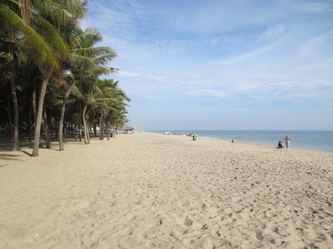
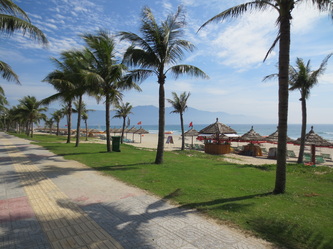
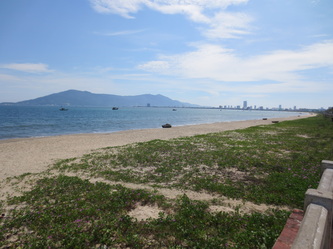
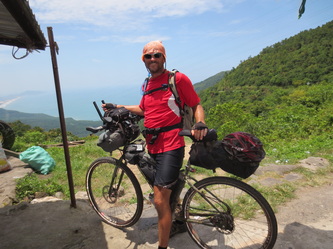
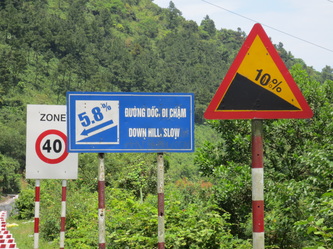

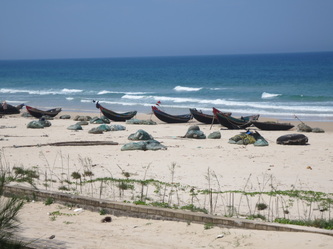


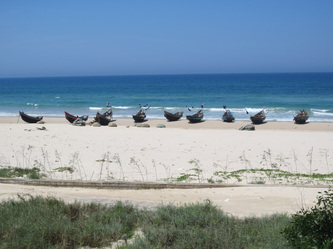
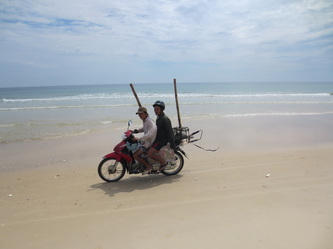
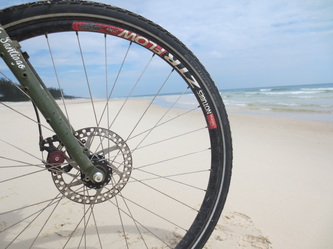
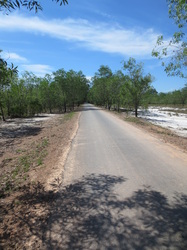
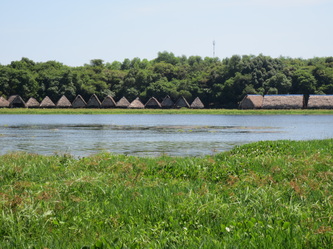
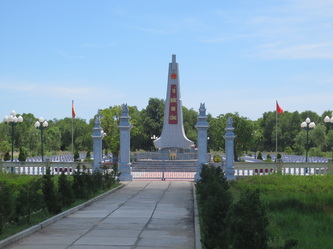

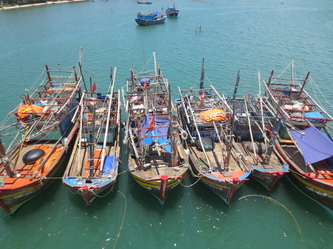
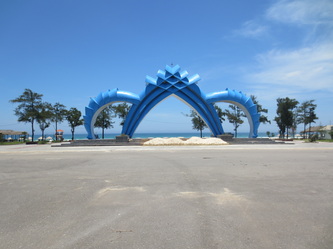
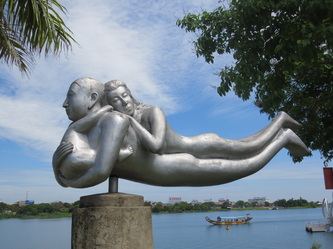
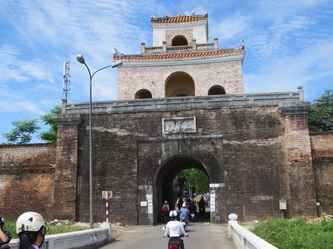
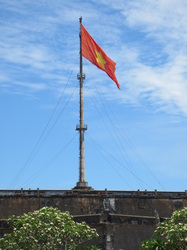

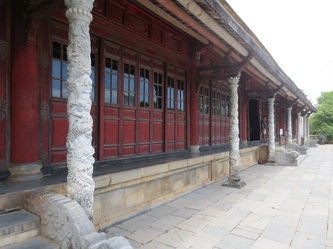
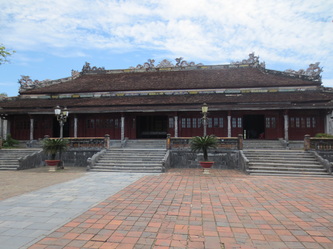
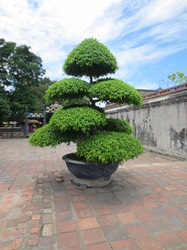
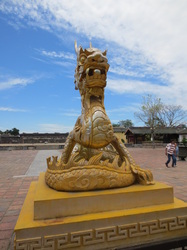
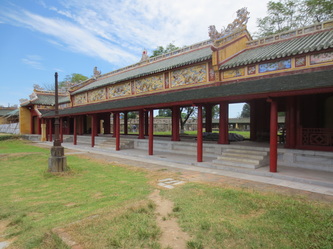
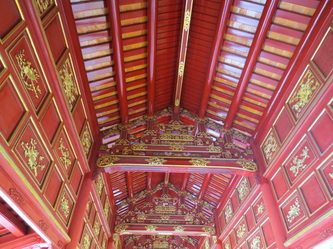
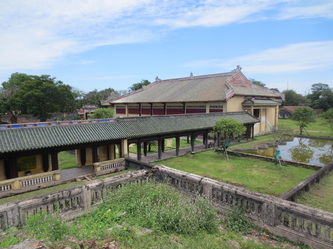
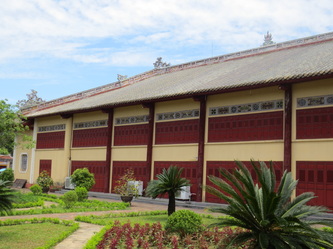
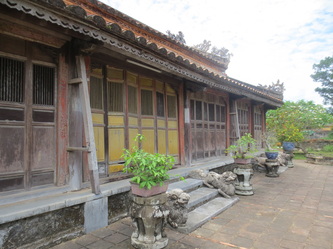

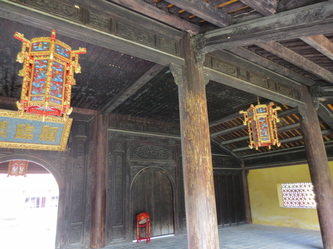
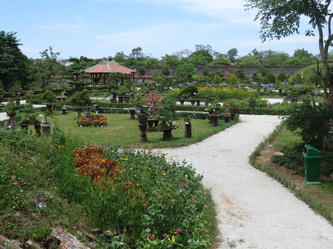
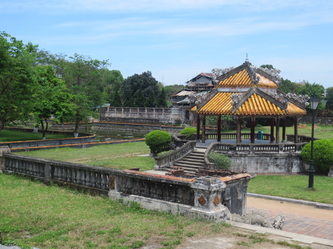
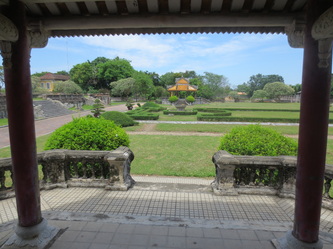
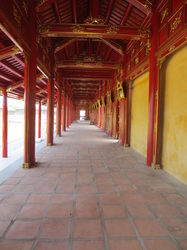

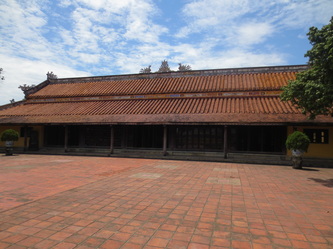
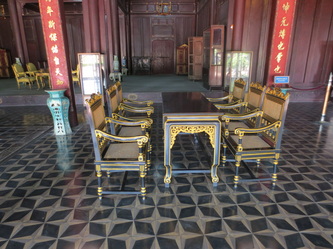
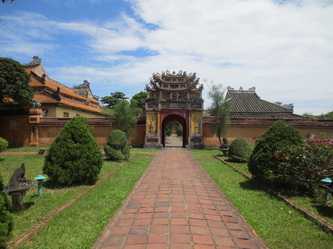



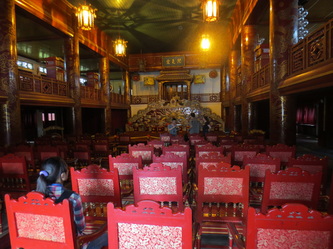




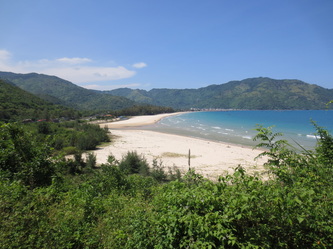

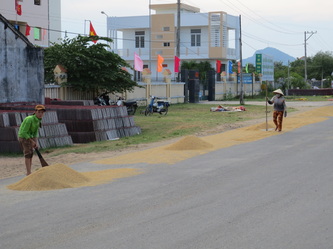
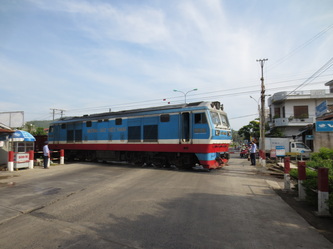

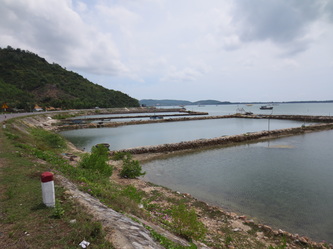

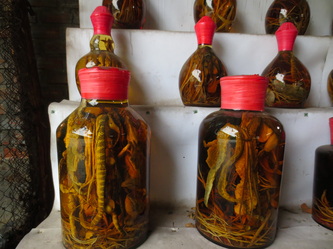
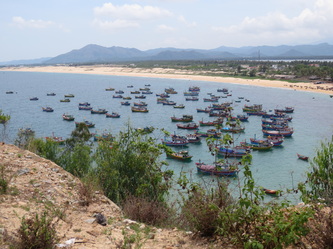
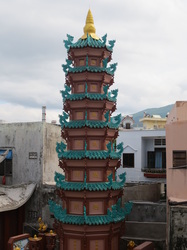
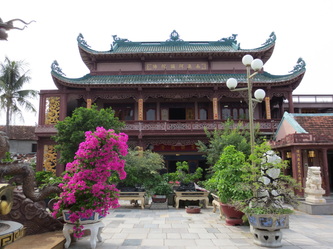

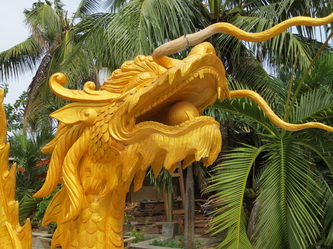

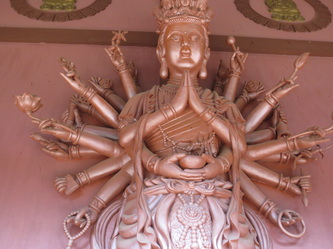
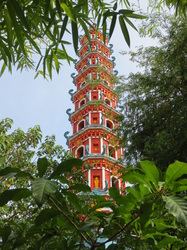
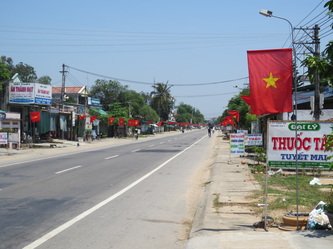
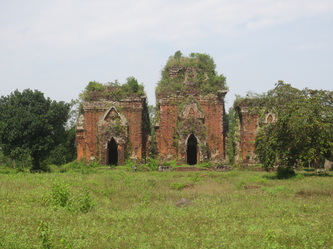
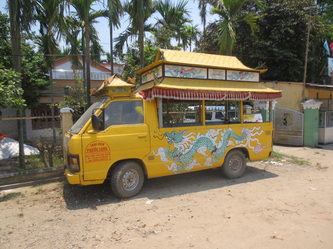
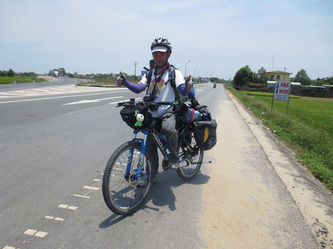
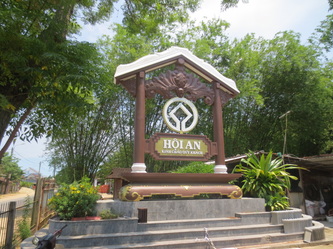
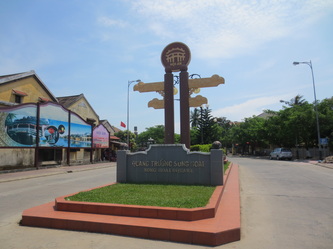
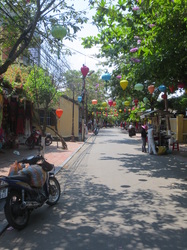
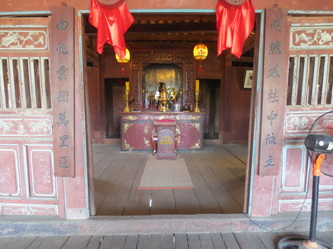
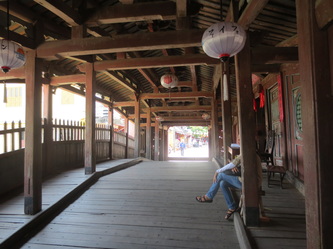

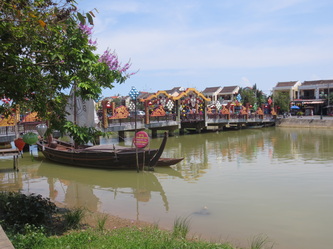

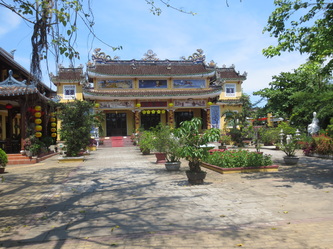
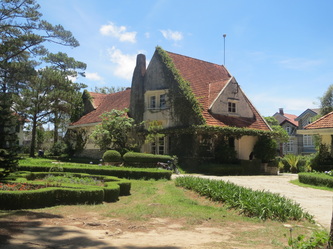
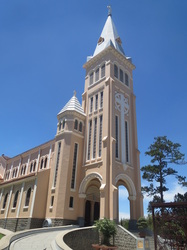

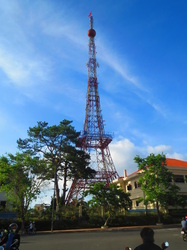

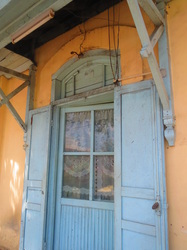
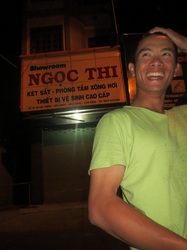
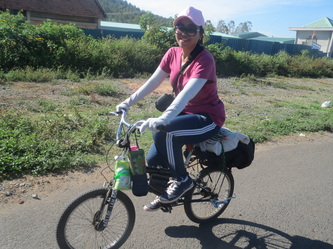
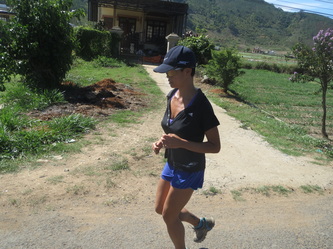
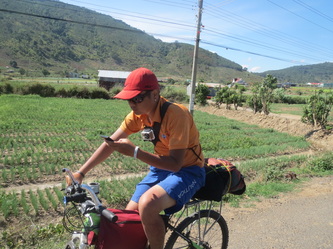
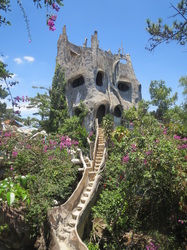
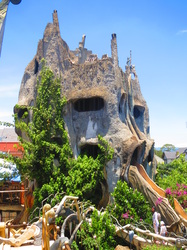
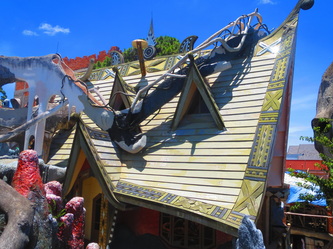
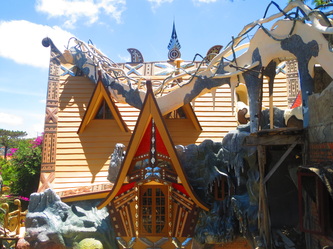

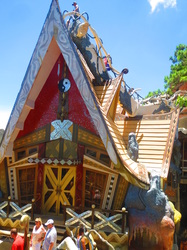


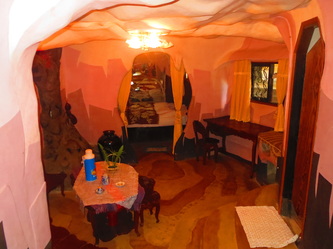



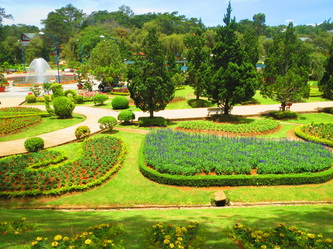
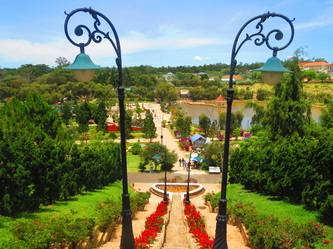
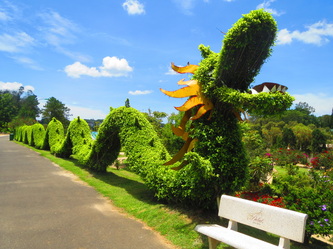
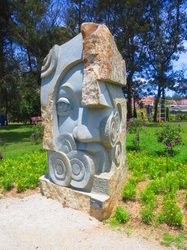

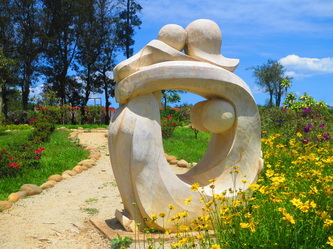

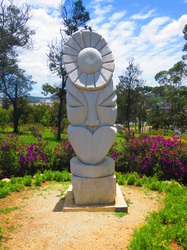
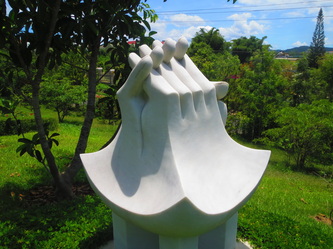
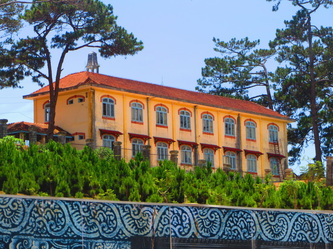

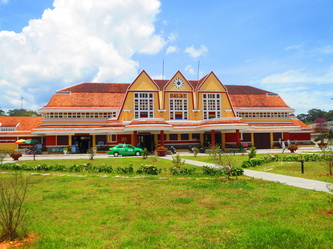
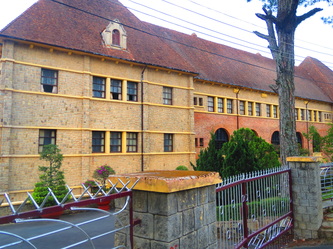
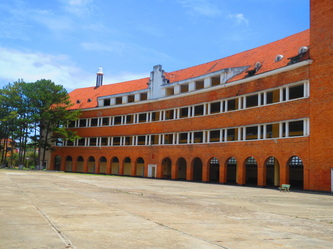


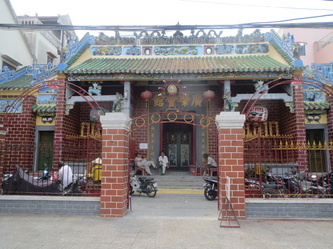


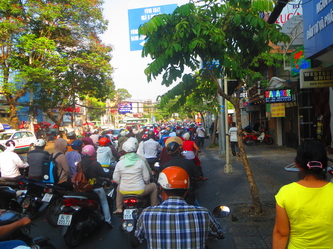
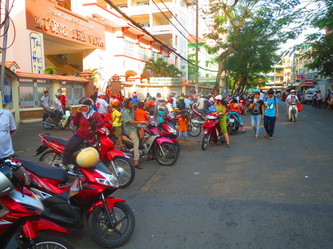
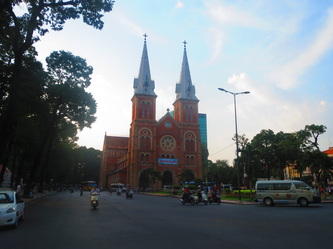

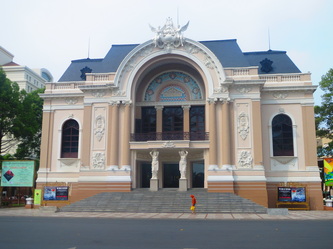
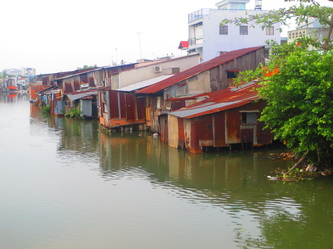
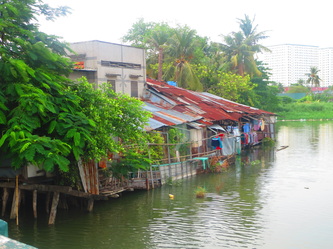

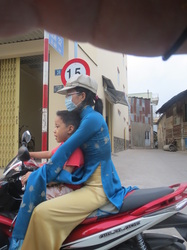
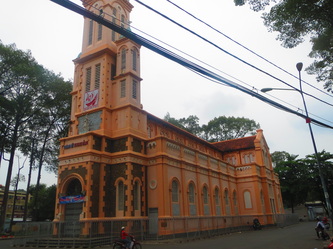
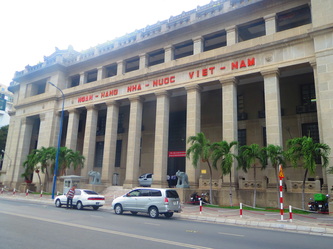
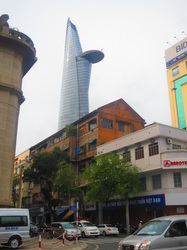

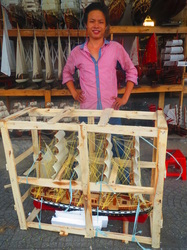
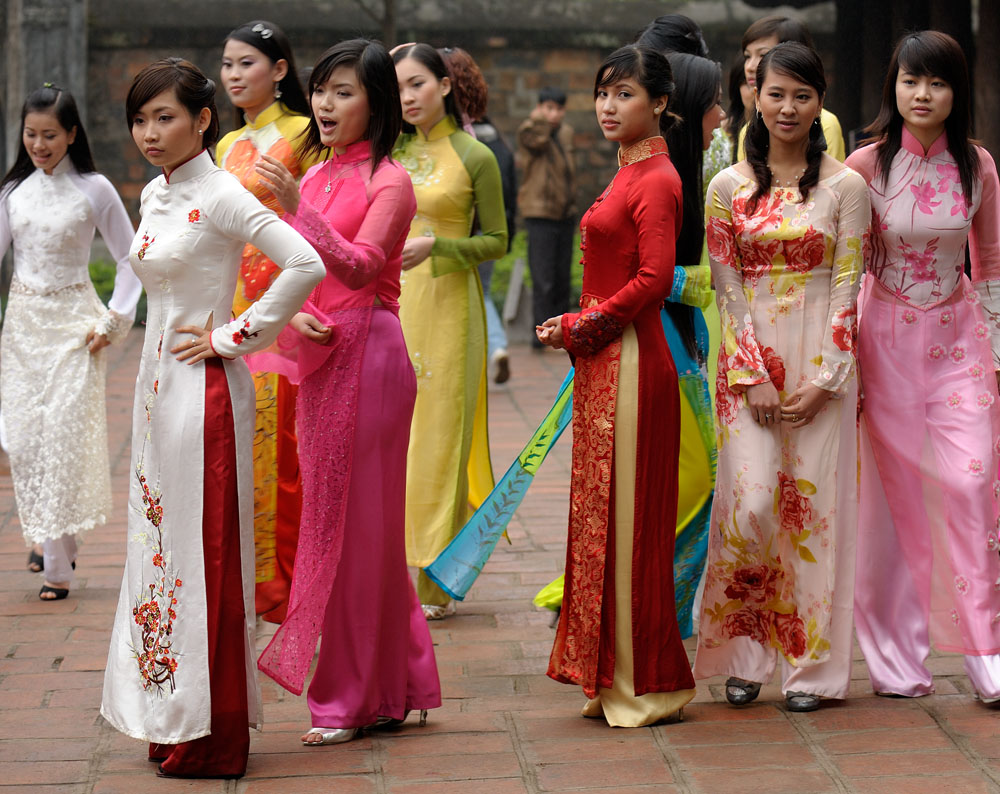
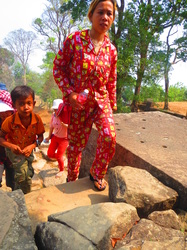
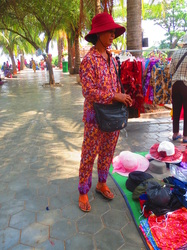
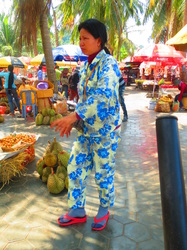
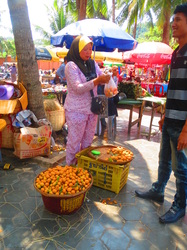
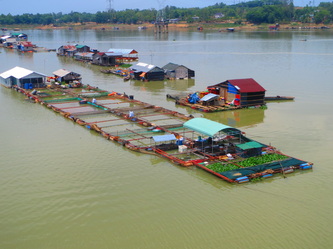


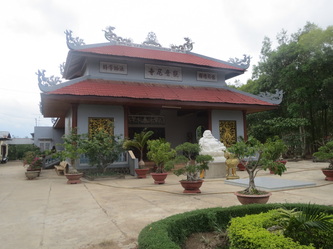
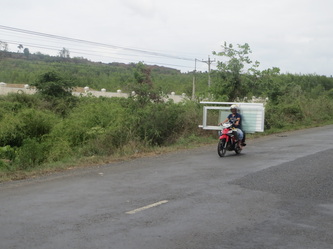
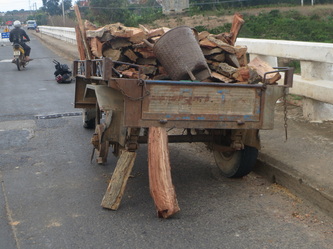



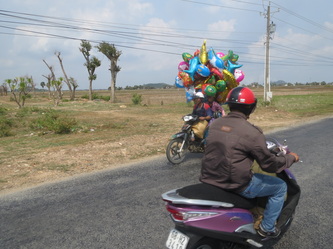

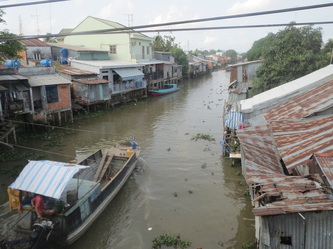
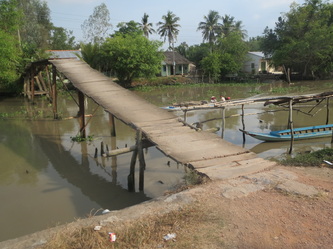
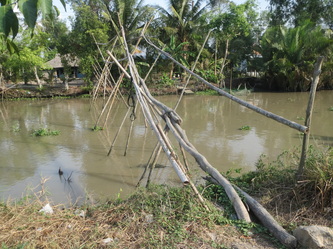
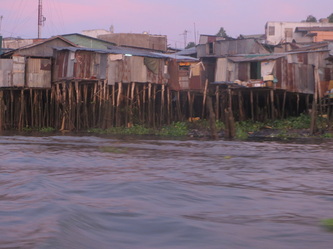
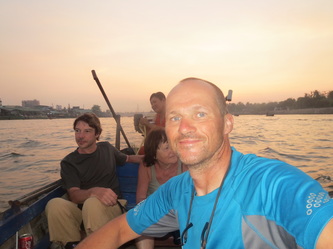
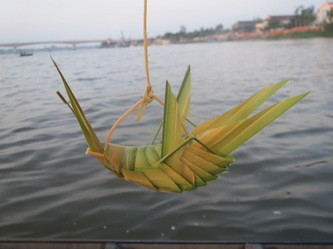
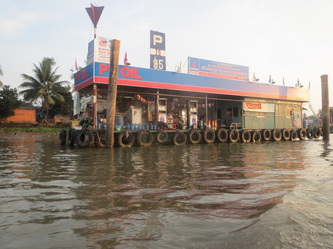
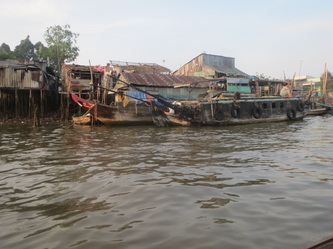
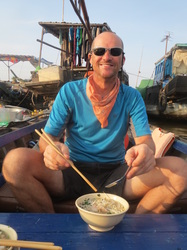


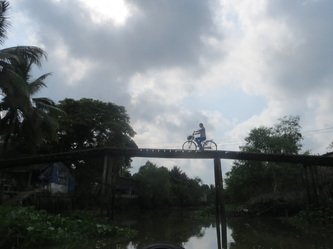
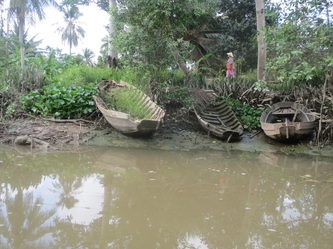

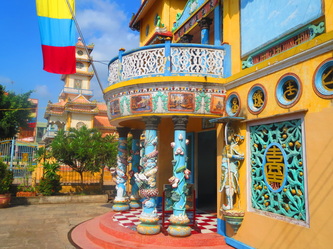
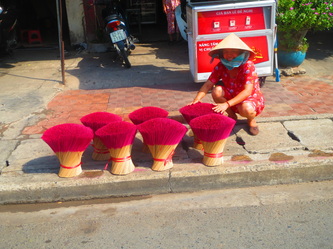

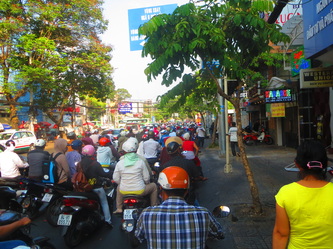

 RSS Feed
RSS Feed